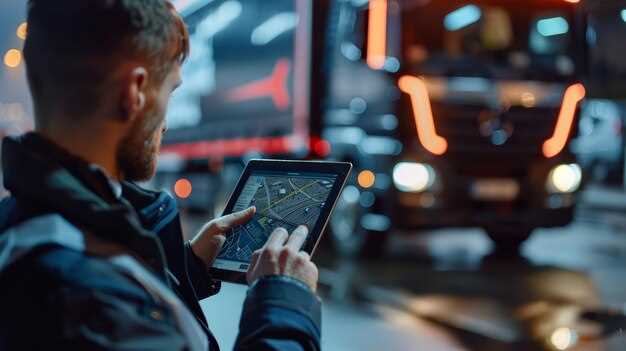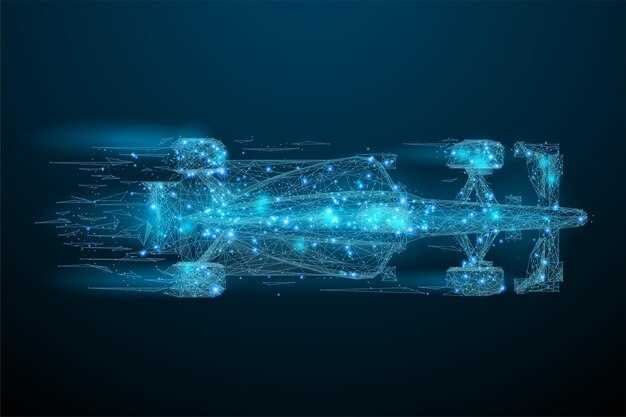
In the dynamic world of motorsports and driving instruction, effective communication between drivers and coaches is paramount. Leveraging real-time telemetry can significantly enhance this interaction, allowing immediate feedback based on precise data collected during practice runs and races. The ability to analyze performance metrics as they happen creates a more responsive coaching environment.
Telemetry systems gather extensive data related to vehicle dynamics, speed, acceleration, and braking patterns. By integrating this information, coaches can provide targeted feedback that addresses specific areas for improvement. For instance, understanding how a driver approaches corners or manages throttle input allows coaches to tailor their advice in a way that resonates with the driver’s unique style and skill level.
This real-time data exchange fosters a collaborative atmosphere, where drivers feel supported and empowered to refine their skills. As a result, the interplay between feedback and data becomes a driving force behind performance enhancement, ensuring that both drivers and coaches are aligned in their goals. By embracing technology, the coaching process transforms into a more effective and engaging experience, ultimately leading to better outcomes on the track.
Utilizing Live Data for Immediate Performance Assessment

In the realm of driver-coach communication, the integration of live data has become a pivotal strategy for immediate performance assessment. This real-time telemetry captures essential metrics such as speed, acceleration, braking patterns, and cornering forces, enabling coaches to provide instant feedback to drivers.
The immediacy of live data allows coaches to identify specific areas of improvement during training sessions or races. For instance, if a driver consistently exceeds optimal braking points, this information can be relayed instantly to modify behavior. Such feedback not only enhances the learning process but also helps in building a stronger driver-coach relationship based on trust and open communication.
Analyzing live data also fosters a more informed coaching approach. Coaches can track how different driving techniques correlate with performance outcomes, leading to personalized strategies that cater to individual driver needs. This adaptive coaching method ensures that feedback is relevant and actionable, ultimately contributing to improved driving skills.
Furthermore, the use of live telemetry enhances accountability. Drivers receive immediate feedback on their actions, encouraging them to reflect on their performance in real-time. This dynamic interaction transforms the coaching environment into a collaborative space where both driver and coach work together towards achieving optimal results.
In conclusion, leveraging live data for immediate performance assessment significantly enhances the effectiveness of driver-coach communication. By providing timely feedback based on accurate measurements, both drivers and coaches can engage in an iterative learning process that leads to measurable improvements on the track.
Integrating Driver Feedback Mechanisms into Telemetry Systems
To enhance the effectiveness of telemetry systems in motorsport, integrating robust driver feedback mechanisms is paramount. This integration ensures that the data collected from the vehicle is not only analyzed but also interpreted in the context of the driver’s experience and perceptions during the race or practice sessions. By enabling drivers to provide real-time feedback, teams can correlate subjective feelings with objective data, resulting in more informed decision-making.
One way to achieve this integration is through the use of mobile applications or in-car interfaces that allow drivers to input their feedback easily and intuitively. For instance, the driver can communicate how the car handles under specific conditions, share thoughts on tire performance, or indicate any discomfort they might feel. This feedback, when recorded alongside telemetry data, provides a comprehensive view of the car’s performance and the driver’s interaction with it.
Moreover, employing standardized metrics for feedback can enhance the clarity and utility of the data collected. By using a structured format for drivers to express their concerns or observations, teams can analyze trends over time. For instance, if multiple drivers report similar issues concerning traction or braking feel, it may highlight a consistent area that requires attention from engineers.
Utilizing advanced telemetry systems that capture both driver feedback and vehicle data creates a feedback loop. This enables real-time adjustments and strategies to be made during practice and races, optimizing vehicle settings while also addressing driver concerns promptly. Such adaptability fosters a culture of continuous improvement, where driver input is respected and integrated into the engineering process.
Additionally, implementing data visualization tools to correlate telemetry data with driver feedback can greatly enhance understanding. For instance, graphical representations of how a driver’s feedback relates to variables like tire temperature, speed, and braking distances can provide insights into performance anomalies and areas for improvement. As a result, integrating driver feedback mechanisms into telemetry systems empowers teams to create a more dynamic and responsive racing strategy.
Building Actionable Strategies from Real-Time Insights

In the rapidly evolving world of motorsport, harnessing real-time telemetry data can significantly enhance the communication between drivers and coaches. By leveraging live data feeds, coaches can provide immediate feedback that is crucial for optimizing performance on the track.
One of the primary strategies involves analyzing critical metrics such as speed, braking patterns, and throttle control in real-time. With this data, coaches can identify areas where the driver may be losing precious time or where improvements can be made. For example, if the telemetry indicates a driver is consistently late on braking points, the coach can deliver targeted advice aimed at adjusting their driving style, allowing for quicker lap times.
Furthermore, live insights can facilitate a more collaborative environment during races. Coaches can communicate through radio systems, offering instant feedback on competitors’ performance and recommending tactical adjustments. This dynamic interaction enables drivers to adapt their strategies on the fly, enhancing the overall racing experience.
To build actionable strategies from these insights, regular debriefings after sessions are essential. Coaches should analyze the live data together with drivers, reinforcing what worked well while pinpointing specific aspects that need adjustment. Such reflective practices not only promote learning but also foster a stronger bond between the driver and coach, as they work together towards a common goal of improved performance.
Ultimately, the ability to translate live telemetry into actionable improvements sets a foundation for success in competitive racing. By consistently utilizing real-time feedback, teams can refine their approach, ensuring that drivers remain at the pinnacle of their capabilities.



